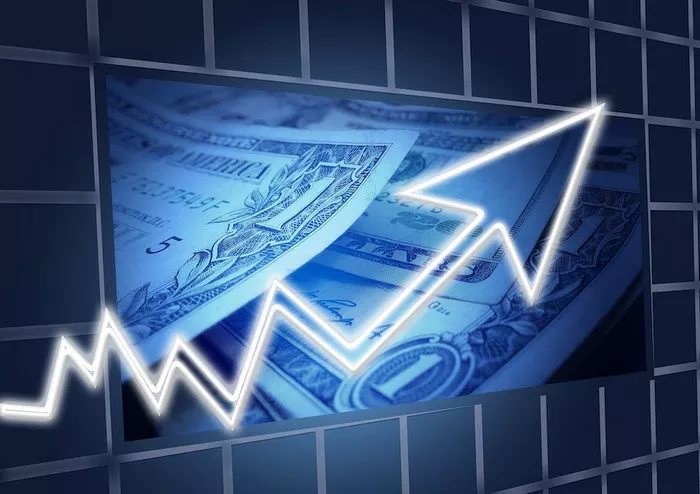Dow futures are a key indicator of the financial markets’ sentiment and can provide valuable insights into the future direction of the Dow Jones Industrial Average (DJIA). Investors closely monitor Dow futures to gauge market expectations and make informed decisions.
1. Positive Economic Data
One of the primary drivers behind the rise in Dow futures today is positive economic data. Economic indicators such as job reports, GDP growth, and manufacturing data can significantly impact market sentiment. When these indicators exceed expectations, it often leads to optimism among investors, driving up Dow futures.
For example, a better-than-expected employment report indicating strong job growth and a decline in unemployment can boost investor confidence. Similarly, robust GDP growth figures suggest a healthy economy, which tends to be reflected in higher Dow futures.
2. Federal Reserve Policies
The policies and statements of the Federal Reserve, the central bank of the United States, have a profound impact on Dow futures. The Federal Reserve’s decisions regarding interest rates, quantitative easing, and its assessment of the economy can influence market expectations.
If the Federal Reserve signals that it will maintain accommodative monetary policies, such as low-interest rates, it can stimulate optimism among investors. Lower interest rates typically encourage borrowing and investment, which can lead to higher stock prices and, consequently, rising Dow futures.
3. Earnings Reports
Corporate earnings reports play a crucial role in determining the direction of Dow futures. When companies report stronger-than-expected earnings and revenue figures, it often leads to upward pressure on stock prices and boosts Dow futures.
Investors closely analyze these reports for insights into a company’s financial health and its outlook for future growth. Positive earnings surprises can create a favorable environment for stock markets and contribute to the rise in Dow futures.
4. Global Economic Trends
The global economic landscape also influences Dow futures. Economic trends in major economies worldwide can impact investor sentiment and market expectations. For example, robust economic growth in key global markets can increase demand for U.S. exports, benefiting American companies and contributing to higher Dow futures.
Conversely, economic uncertainty or crises in major economies can lead investors to seek safe-haven assets, which may temporarily weigh on Dow futures. However, global economic stability and growth can have a positive impact on investor confidence and Dow futures.
5. Geopolitical Developments
Geopolitical developments, including trade negotiations, international conflicts, and political events, can have a significant impact on Dow futures. Positive progress in trade talks or the resolution of geopolitical tensions can lead to rising Dow futures as investors become more optimistic about economic stability and growth.
On the other hand, unexpected geopolitical events or trade disputes can introduce uncertainty into the market, leading to fluctuations in Dow futures. Investors closely monitor geopolitical developments for potential risks and opportunities.
6. Market Sentiment
Market sentiment, often driven by investor psychology and sentiment indicators, plays a critical role in determining the direction of Dow futures. Positive sentiment can create a bullish market environment, driving demand for stocks and contributing to higher Dow futures.
Sentiment indicators, such as the CBOE Volatility Index (VIX), which measures market volatility and fear, can provide insights into investor sentiment. When the VIX is low, it suggests that investors are relatively confident, which can be reflected in rising Dow futures.
7. Sector-Specific Factors
Various sectors of the stock market can experience unique influences that impact Dow futures. For example, developments in the technology sector, including the performance of major tech companies like Apple, Amazon, and Microsoft, can have a significant impact on Dow futures due to their weight in the DJIA.
Similarly, the energy sector may be influenced by changes in oil prices, while the financial sector can be sensitive to interest rate movements. Positive news or trends within specific sectors can contribute to the rise in Dow futures, reflecting the strength of those sectors in the overall market.
8. Investor Behavior
Investor behavior, including buying and selling patterns, can affect Dow futures. Market sentiment often drives investors to buy or sell assets, influencing stock prices and futures contracts.
For instance, a surge in buying activity, often driven by investor optimism, can lead to rising Dow futures. Conversely, selling pressure, whether due to profit-taking or negative sentiment, can lead to declines in Dow futures.
9. Technical Analysis
Technical analysis, which involves studying historical price charts and patterns, is another factor contributing to the rise in Dow futures today. Traders and analysts use technical indicators and chart patterns to identify potential buying or selling opportunities.
When technical analysis suggests that the Dow Jones Industrial Average is likely to move higher, it can lead to increased demand for futures contracts, pushing up Dow futures.
10. Market Liquidity
Market liquidity, the ease with which assets can be bought or sold without significantly affecting their prices, can impact Dow futures. High liquidity often leads to smoother market operations and can facilitate large-scale buying or selling, which can affect futures prices.
If market conditions are characterized by ample liquidity and low trading costs, it can encourage investor participation and contribute to the rise in Dow futures.
Conclusion
In conclusion, multiple factors contribute to the rise in Dow futures today. Positive economic data, Federal Reserve policies, earnings reports, global economic trends, geopolitical developments, market sentiment, sector-specific factors, investor behavior, technical analysis, and market liquidity all play roles in shaping market sentiment and influencing Dow futures.
Investors and traders closely monitor these factors to make informed decisions and position themselves effectively in the market. While Dow futures are subject to fluctuations based on these factors, it is important for market participants to conduct thorough research and analysis to navigate the complex landscape of futures trading.


